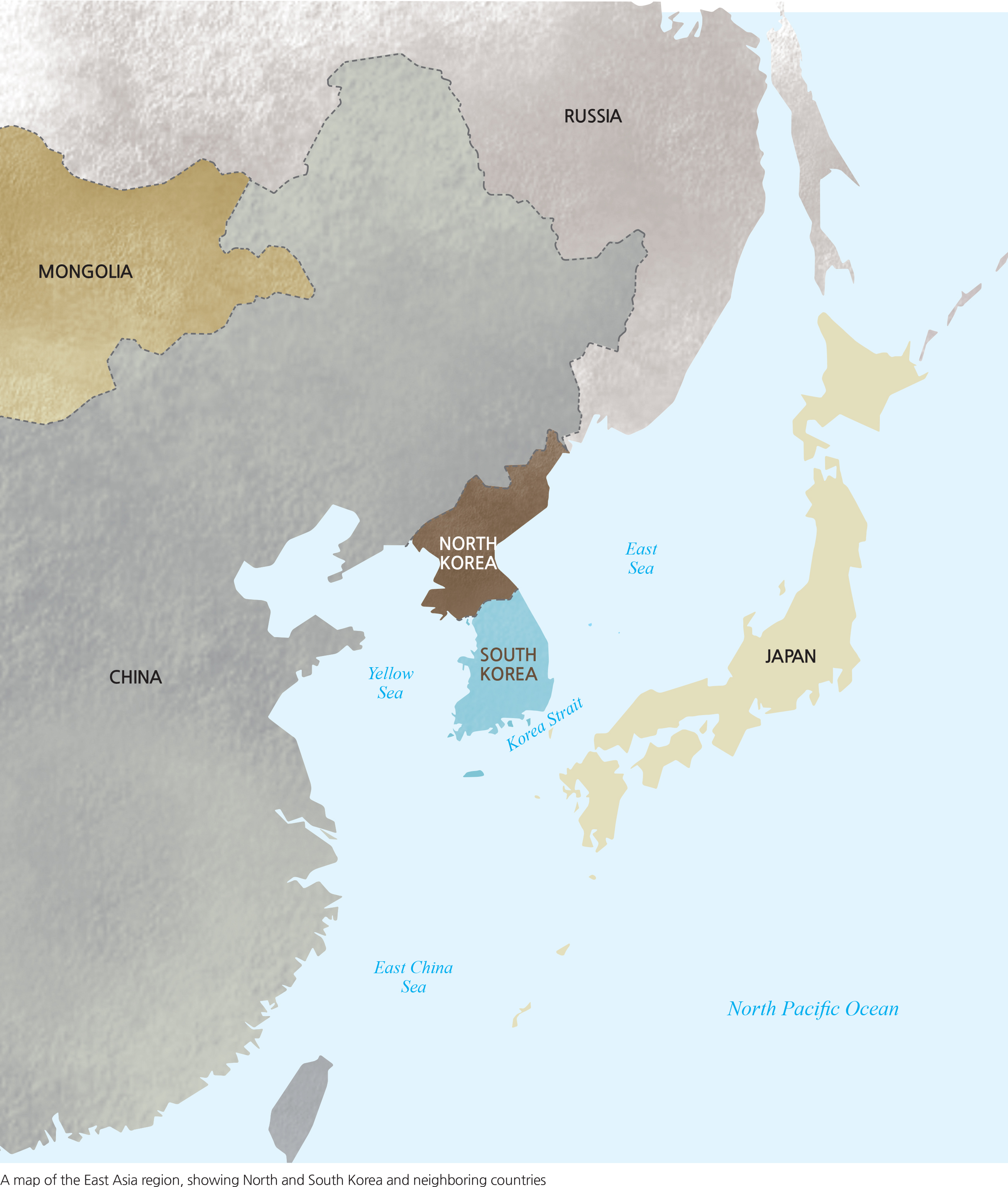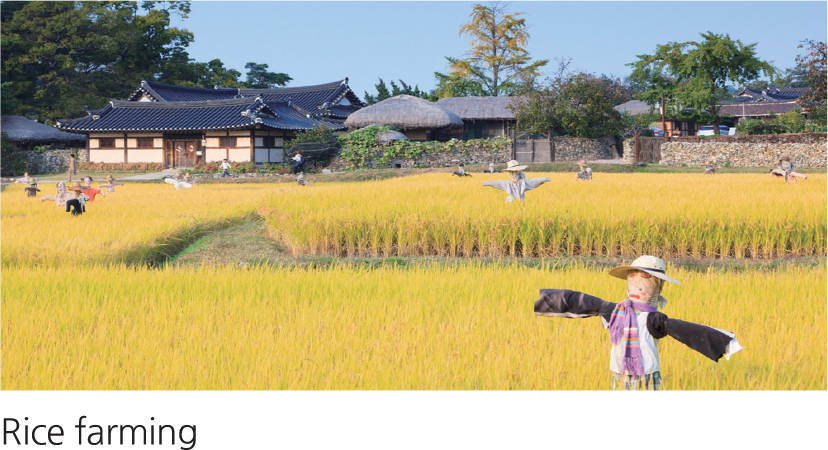Korea sits at the edge of the earth’'s largest continent, facing the earth’'s largest ocean, where Asia meets the Pacific. Due to its special location, Korea acts as a gateway to East Asia, well-connected to other countries in the region and across the globe. Ships and planes easily transport people and materials between Korea and trading partners worldwide.
Korea is on a peninsula—-an extension of land bordered on most sides by water.
Koreans living on the east coast can watch the morning sun rise over the East Sea. In the evening, those on the west coast see the sun set over the Yellow Sea. A narrow body of water, the Korea Strait, separates the southern part of the peninsula from the island nation of Japan. To the north, the peninsula connects Korea with two countries: China and Russia. The territory of Korea, including the several islands that surround it, extends from about 33 to 43 degrees north latitude, placing it in the temperate mid-latitude zone. This location gives Korea a moderate climate with warm, rainy summers and cold winters.
For thousands of years Korea has been unified by a distinct language and identity. A long tradition of scholarly and artistic pursuits are reflected in the architecture, literature, and culture of the country. Unfortunately, after the Korean War in the 1950s, Korea was split into two countries: North and South Korea. In the decades since the war the economy and quality of life in South Korea have improved greatly. South Korea has emerged as an economic powerhouse, exporting high-tech items such as smart phones and automobiles and sharing its unique food, music, and culture with the rest of the world. As it draws on its deep roots and its rich history, South Korea continues to apply its recent prosperity in a responsible way, engaging in beneficial exchanges with other countries, contributing new ideas and forging new partnerships as a critical member of the global community.





